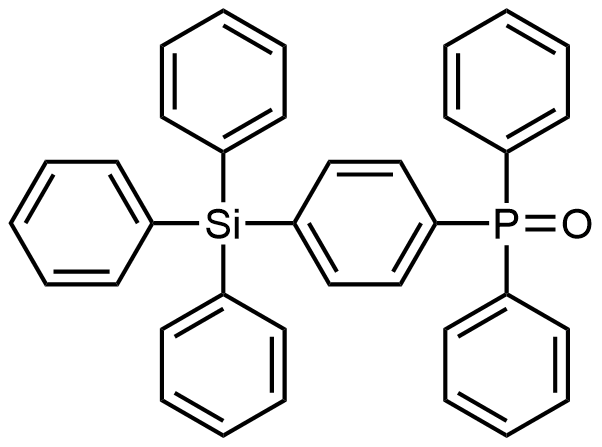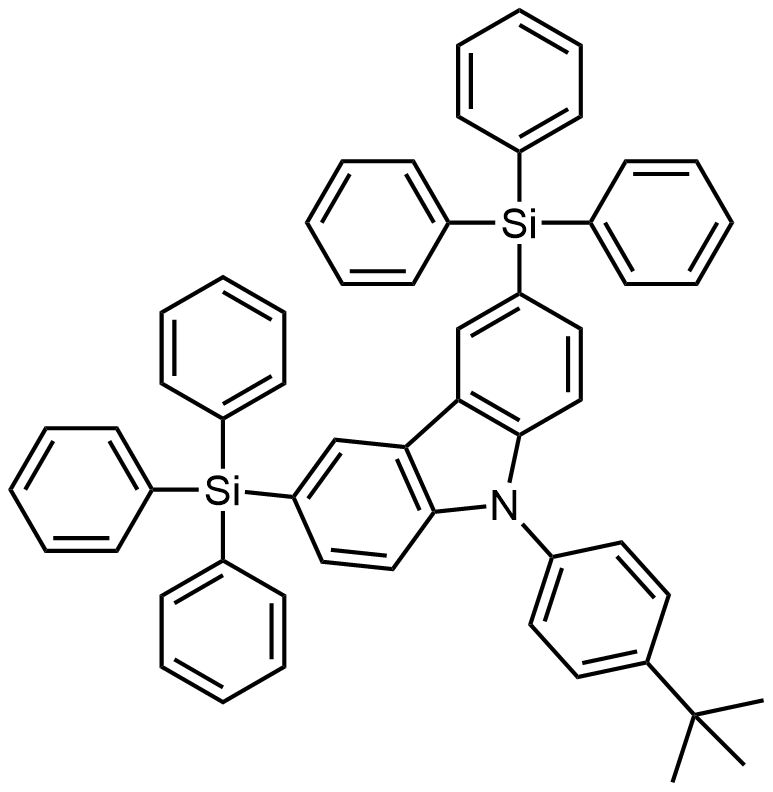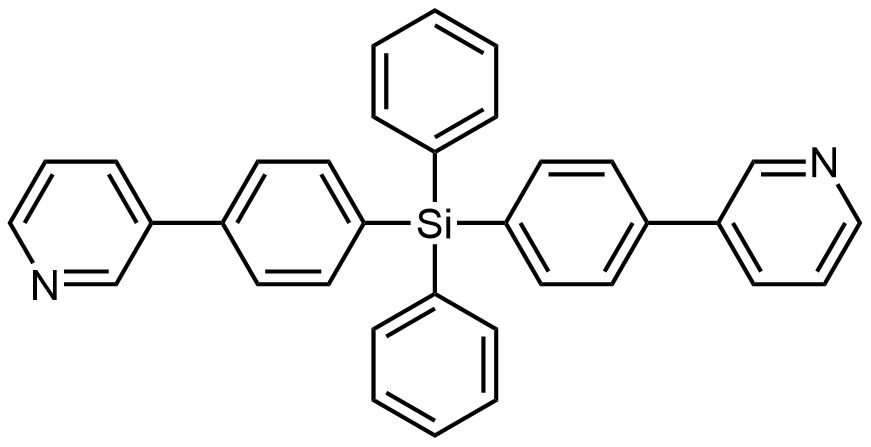TTPA
| CAS number: | 177799-16-5 |
NPNPB
| CAS number: | 936355-01-0 |

TSPO1
| CAS number: | 1286708-86-8 |
Tris-PCz
| CAS number: | 1141757-83-6 |
B2PymPm
| CAS number: | 1266181-51-4 |
B4PyPPm
| CAS number: | 1097652-83-9 |
B3PyPB
| CAS number: | 1030380-38-1 |
B3PymPm
| CAS number: | 925425-96-3 |

CzSi
| CAS number: | 898546-82-2 |

DPPS
| CAS number: | 1152162-74-7 |